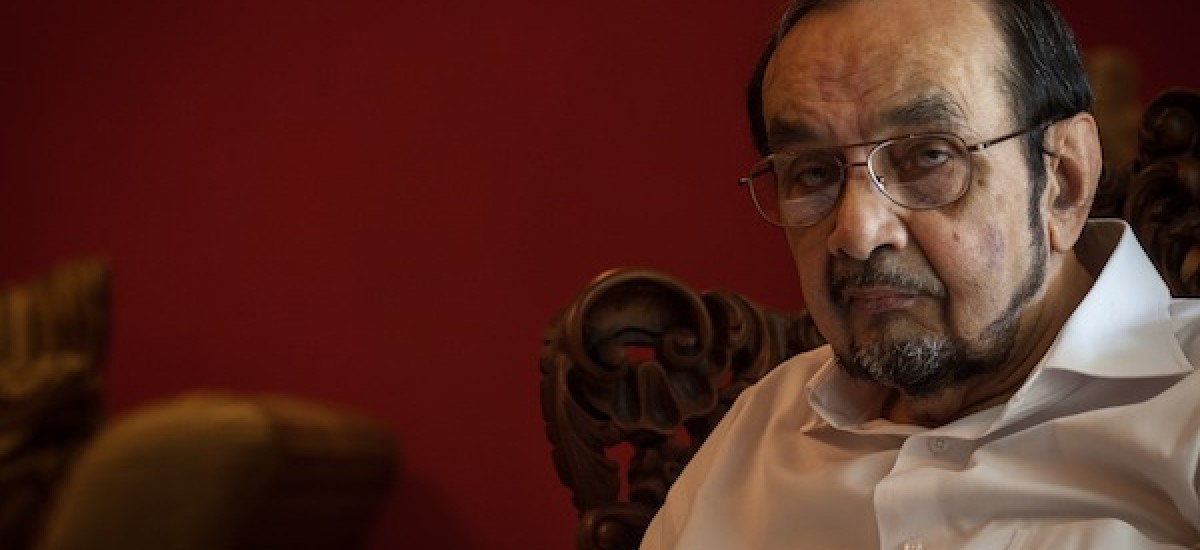
Photography by Alefiya Akbarally and Kannan Arunasalam
Inayet Akbarally tells the remarkable story of his great grandfather Careemjee Jafferjee and how he became the first member of the Dawoodi Bohra community to set foot in Ceylon believed to be around 1830. A “Peterite” through and through, he reflects on the days when where you went to school trumped ethnicity and even religion.
Despite his intimidating position as a partner in one of Sri Lanka’s leading private companies, Mr Akbarally is a quiet and unassuming man. We sat in the lounge of his spacious house in Bambalapitiya, surrounded by photographs of family going back generations and also of the community’s spiritual leader, his Holiness the Syedna.
Fleeing persecution in Yemen, the community ended up in India, with some families settling in Kutch Mandvi, in the state of Gujurat in western India. His great grandfather Careemjee Jafferjee traded spices between Zanzibar, Maldives and Gujarat, travelling in sailing ships called buggullos. A famine displaced much of the community to different parts of India but it was Careemjee Jafferjee who was the first Bohra to set foot in what was British Ceylon, initially placing his roots in Galle where he was shipwrecked during a return voyage home from Maldives around 1830, and then moving to Colombo and Pettah twenty years later, as the community grew. Mr Akbarally’s great grand father became known in the wider community as the Merchant Prince, and celebrated for his philanthropy.
Mr Akbarally also talked to me about the annual gathering of his community, when Bohras from around the world congregate at a city chosen by their spiritual leader, Dai-Ul-Mutlaq, Dr. Syedna Mohammad Burhannudin to mark the Ashura Mubaraka. The Ashura is considered to be one of most important and holy events in the Shia Muslim calendar, which commemorates the martyrdom of Prophet Mohammad’s grandson, Imam Hussain. Thousands of Dawoodi Bohras come together to observe this holy period and the Sri Lankan Bohra community have played host to the Syedna in the past.
With their distinctive dress – the women wear a ridah and they stand out during this period as the community comes together for prayers at the mosque in Glen Arbour Place, Bambalapitiya. This mosque was built by two other prominent Bohra families also from Kutch Mandvi, the E.G. Adamalee and Adamjee Lukmanjee families. But the community’s original mosque in Galle, where his great grandfather stayed for months following his shipwreck, still stands today.
The fascinating story of the community roots in Yemen, Mandvi and other parts of India are legendary and are passed down at the Ashura from generation to generation, keeping their story alive. “Up to now I’m listening,” Mr Akbarally told me as we looked through his wife’s scrapbook of family photos and newspaper cuttings, of tributes to his community that fled Yemen to India, and then sought a new life in Ceylon.
Together with his brothers, Inayet Akbarally formed Akbar Brothers, and like his forefathers, trade in goods around the world. Fittingly, the term Bohra is a Gujurathi word for ‘trader’.
“We were living in this same road in a rented house from 1945 to 1956” Mr Akbarally began, proud of the family’s modest roots. “The wealthier families sent their boys to S. Thomas’. We were Peterites”, launching into an anecdote about always being the only Bohra in his class and how those days, where you went to school trumped ethnicity and religion. “Even if it was another Bohra playing, I’d still be cheering for St Peters. You were for your school, come what may.”
Groundviews is honoured to feature, for the first time, the photography of his daughter Alefiya Akbarally who was given unprecedented access to photograph the visit of the His Holiness the Syedna in January 2007.
In addition to the video above, listen to seven interview segments with Mr. Akbarally.
If navigating the podcasts via the widget above is too complicated, each riveting recording can be listened to by clicking on the links below.
- He had to stay there for several months to get his vessel repaired
- My great grandfather built the first mosque in Galle
- Not that we are low profile we don’t make too much mark
- Original families who came to Sri Lanka from Kutch Mandvi
- We call them Yemeni Bohras
- We used to mingle with them but the common festivals were the same
- You were for your school, come what may
###
‘I am’ is a multimedia project exploring Sri Lanka’s identity through the lives of elders. The ‘I am’ project aims to engage people with oral history and, through the wisdom of these wonderful elders, to challenge perceptions of identity and explore how this could help bring communities together.
Photo credits Alefiya Akbarally, Kannan Arunasalam (for I Am multimedia clip)
Photos on Groundviews post, Alefiya Akbarally





